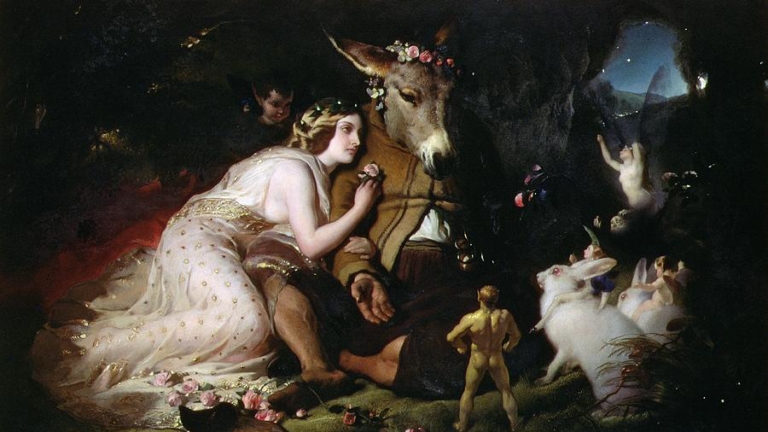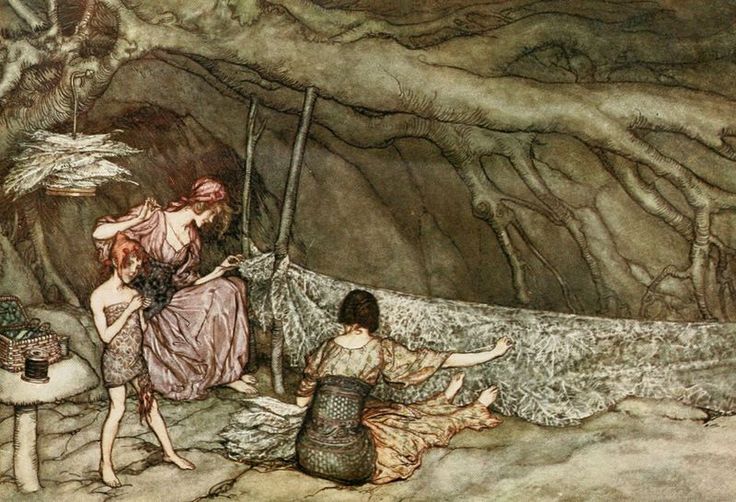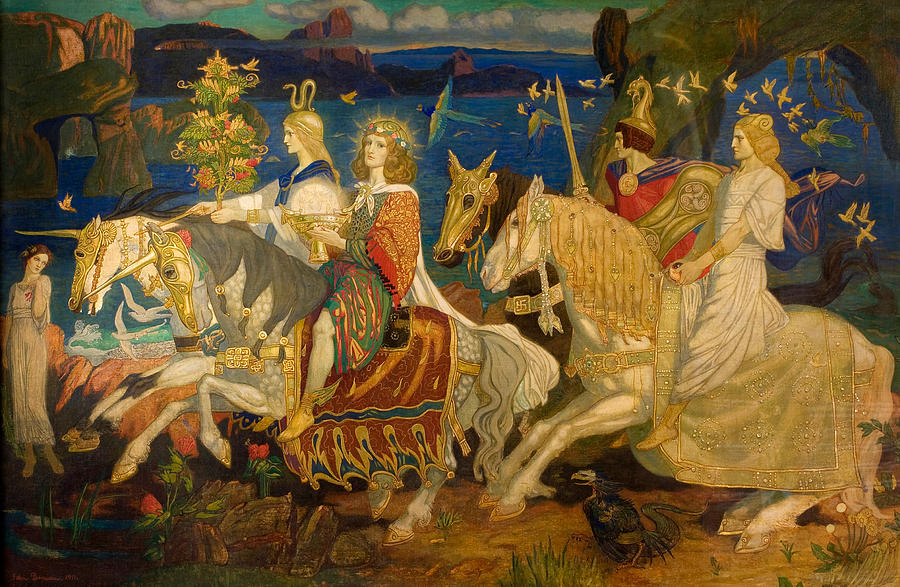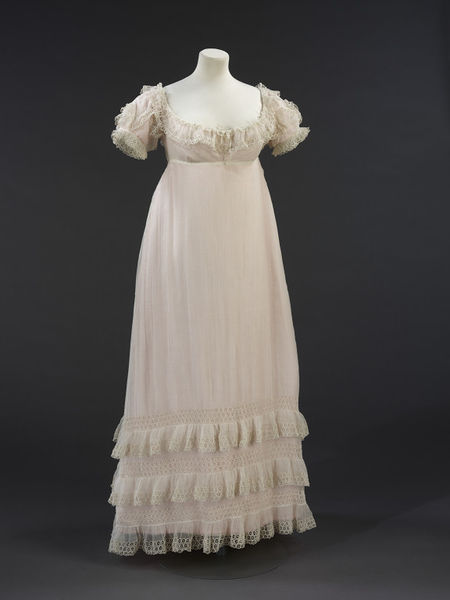Faeries Bright and Dark

by Bridget Bradley-Scaife and Jennifer Jespersen, First published for the July/August 2009 issue of Finery
When observing faeries on the whole, there are two distinctions that have become most well-known: those of the Seelie Court and those of the Unseelie Court. This division is based in Scottish mythology, and it is used to determine the good faeries from the bad.
The Seelie Court, regarded as blessed or holy, is the home of the light and aristocratic Sidhe, the bright and shining throng. According to the mythology, the Seelie faeries are kind, gentle, high-spirited and playful, and they are most often visible at twilight. They were known for favoring a more benevolent way towards humans, returning favors or kindnesses with their own gifts, or avenging injuries. They will also protect humans and travelers, keeping them from wandering down dangerous roads.
Seelie faeries are often described as beautiful in a way that reflects their blessed, holy or pure nature: with hair that is blonde, white or colored in a natural—and almost human—way, pale crystalline skin, light eyes, and delicate, slender bodies. While they hold the three sacred tenants of love, beauty and truth, let no one be mistaken: the Seelie are still faeries, and therefore inherently mischievous and meddlesome in the classic faerie way. Their tricks, however, tend to be rooted more in play than in menace, and they are known for ending their games before any human gets hurt. Fae beings often considered part of the Seelie Court include nymphs, trooping fairies, swan maidens, brownies, hobgoblins and selkies.

Illustration from Peter Pan in Kensington Gardens, 1906
The Unseelie Court is the realm of the unblessed or unholy. These are the dark fae, known most for malicious and violent behavior. They are the creatures of the night, coming in the darkest hours to wreak havoc upon unsuspecting travelers and a sleeping, defenseless world. While not all of the Unseelie are predominately evil, lore has it that they prefer to harm—rather than help—humans when forced to choose. In appearance, the Unseelie come in countless forms, often those that are the stuff of nightmares. Dagger-like fingernails, fangs, split tongues, horns and pitch-black or flaming red eyes are often considered Unseelie traits. Conversely, many members of the Unseelie Court don’t feature twisted or nightmarish appearances, but they simply appear as the opposite of their pale, shining Seelie kin. Vibrant eyes, richly colored skin, hair that takes on the appearance of spun garnets, emeralds, sapphires or ebony are all attributes that can be applied. Kelpies, Redcaps, boggarts, bogeymen, brags, demons, gwyllion, harpies, spriggans and the beautiful, but deadly, water nix (or nixies) are considered members of the Unseelie Court.

“The boy and the trolls” in Among pixies and trolls, 1915.
When costuming the faerie realm, it is most important to look into how to best depict your subject. Remember that not all faeries have wings, not all of them don little green dresses or meticulously tattered skirts, and not all of them are covered in glitter. Take a look at the artwork of Brian Froud and Amy Brown for some beautiful depictions of faerie folk. There are many other wonderful artists that can be found on the internet which can provide lots of costuming inspiration. Still looking for inspiration? Search on the internet or ebay for “faerie” or “fairy” dolls. Many doll artists have some great ideas can be translated into costumes for bigger people.




Leave a comment